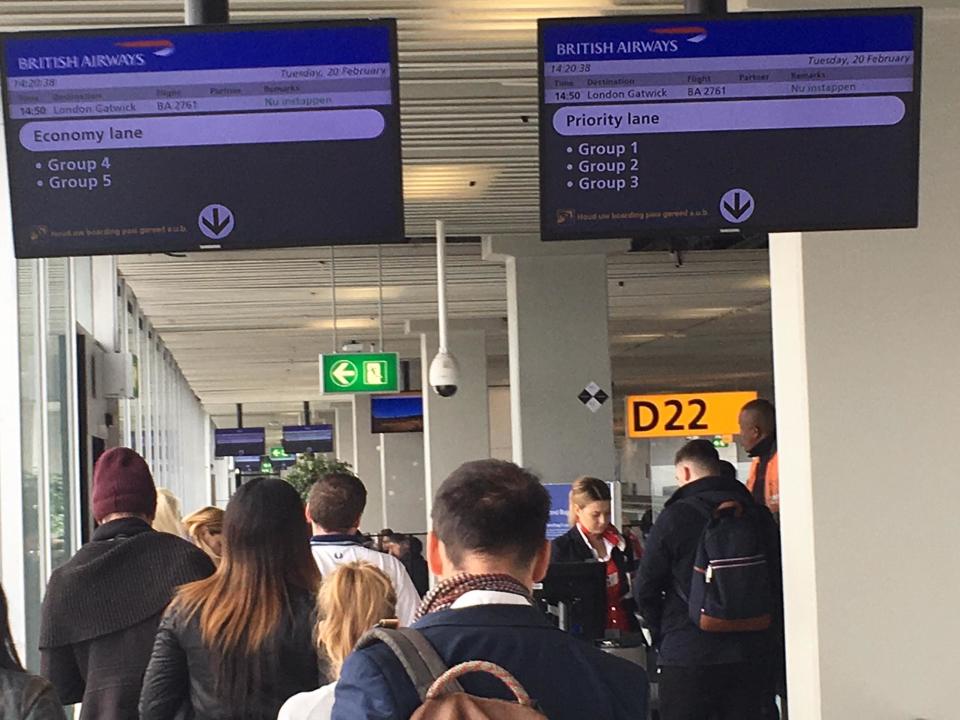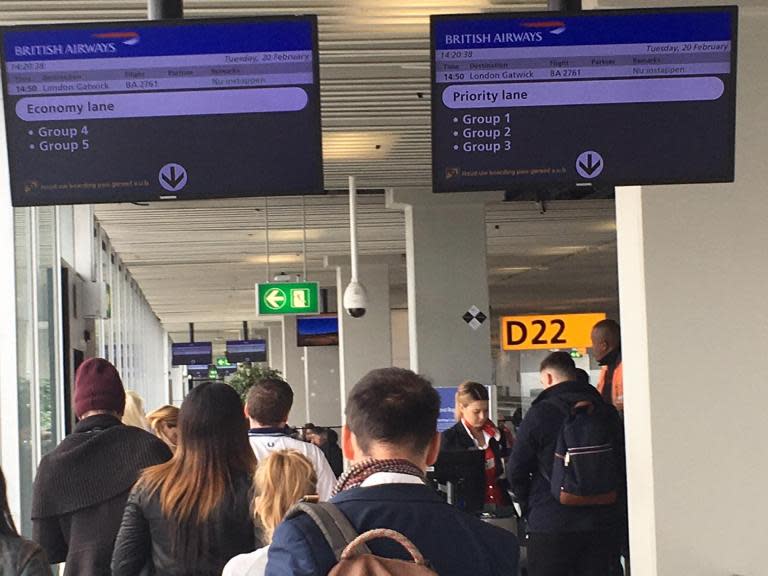Train versus plane: what’s the fastest way between London and Amsterdam?
The inaugural Eurostar service took three hours, 44 minutes from London St Pancras to Amsterdam Centraal station. On the return journey, I set out to test the same point-to-point trip by air.
All times GMT.
12.31pm: Amsterdam Centraal
There are frequent trains to the airport. Unlike, say, London Victoria station used by travellers to Gatwick, the ticket machines at the busiest station in the Netherlands have a button saying “I want to go to Schiphol airport”, making buying the €5.30 (£4.70) ticket easy. The stopping train dawdles, reaching the airport a couple of minutes late.
12.50pm: railway station, Amsterdam Schiphol airport
Amsterdam may be the third-busiest airport in Europe, after London Heathrow and Paris Charles de Gaulle, but unlike its rivals it has a single terminal. Now, if you’re changing planes (as many passengers do at Schiphol) that’s great news: no inter-terminal transfers to contend with, and the full range of airport amenities. But if you are a point-to-point passenger it means a long old walk. Even with no queue at security or passports, it takes a full half-hour to reach Gate D24, where I am among the stragglers.
1.37pm: Gate D24, Amsterdam Schiphol airport
“Cabin crew, boarding now complete.” I bought my British Airways flight the night before, price €58 (£52); the lowest one-way fare on Eurostar is £35, but that requires booking well in advance. The captain announced: “We should be under way nicely ahead of schedule.” And we were, pushing back at 1.44pm.
Trains sometimes arrive early, but don’t usually depart early. Planes do both, sometimes. “We’re taxiing two miles out to runway 36 left,” says the pilot. So luckily I can enjoy the drive from my window seat. At a cyclist’s pace, we join a convoy of a KLM 787 and 777 heading over a couple of motorways and a canal, meander across the meadows and past farm buildings until finally lining up behind the Boeings.
2.02pm: take off from runway 36L
A sharp left turn, over the beach and into the clouds The “block time” for the flight, measuring the time from gate to gate, is 70 minutes. The captain promises a flying time of 45 minutes to the world’s busiest single-runway airport.
2.32pm: 12,000 feet above Kent
The garden of England has appeared prettily beneath me. Usable laptop time between seat-belt sign going off and coming on again: half-an-hour, compared with almost four straight hours on Eurostar.
Then the plane performs an unexpected circuit over Sussex, landing later than promised at 2.51pm.
3pm: South Terminal, Gatwick airport
The Airbus A320 reaches the gate exactly on time, despite the early start. After sprinting past the business-class passengers, I get to passport control moments after 300 happy people just back from Mauritius. Of 25 self-service passport machines, only 10 are working. I ask the attendant why. "Staff shortage," he replies. The queue slows my progress and means I miss the direct Thameslink train to London St Pancras, my final destination. Instead I take the Southern train to London Victoria. Which is late. Then the Tube.
4.15pm: London St Pancras International
Total journey time from Amsterdam Centraal station: three hours, 44 minutes. Which is exactly what it took on my very slightly delayed train to the Dutch capital. A tie, but on a technicality, the plane wins because of check-in times. While the airport process is included in the point-to-point journey involving the plane, to be fair you should really add the mandatory half-hour check-in before the Eurostar train.
From 4 April there will be two direct trains a day (one at weekends) from London to Amsterdam. The inbound journey requires a change of train at Brussels and adds an extra hour to the trip.
But compared with the train, it’s been an awkward and stressful journey, and frankly I’m frazzled. If you’ve just enjoyed a relaxed weekend in Amsterdam, it could undo all that good. My conclusion: even with the Brussels bother, let the train take the strain.



